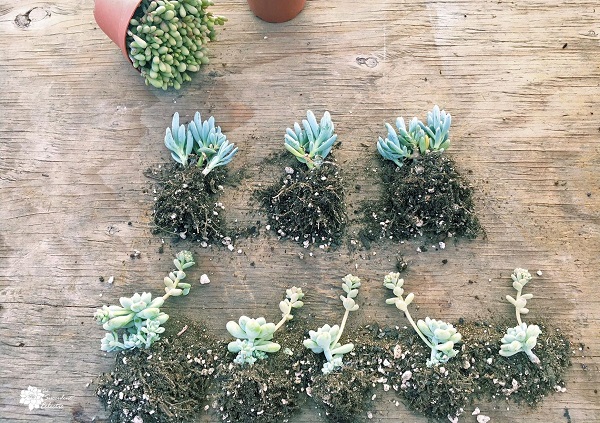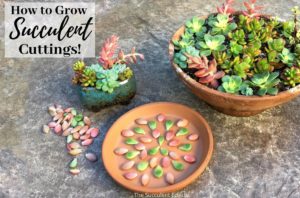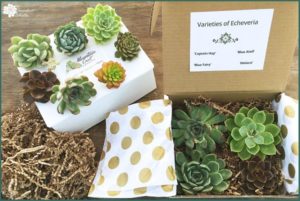When you love succulents, it quickly becomes an obsession, with a growing desire for more plants! One of the best ways to grow your collection is by propagatingPropagating (PRAH-puh-gate-ing) a plant is to grow another p... succulents – or making more plants from the ones you have. There are several ways to do this. Today, let’s look at multiplying your plants through division. (New math? Actually, it is very, very old…) Dividing succulents, or any type of plant, is a terrific way to save money at the nursery, by selecting a single, large potted plant, rather than paying for several smaller ones. Or, you can refresh an established planting by moving smaller plants and giving all of them more space in which to grow.
How to Separate Succulents
In this Post We'll Cover:
{Please note, some links in this post may be affiliate links to sites that pay me a small commission if you click on the link and make a purchase. This commission is at absolutely no cost to you. I only recommend products and companies that I have worked with and truly love! ~Kat}
What Types of Succulents Can Be Divided?
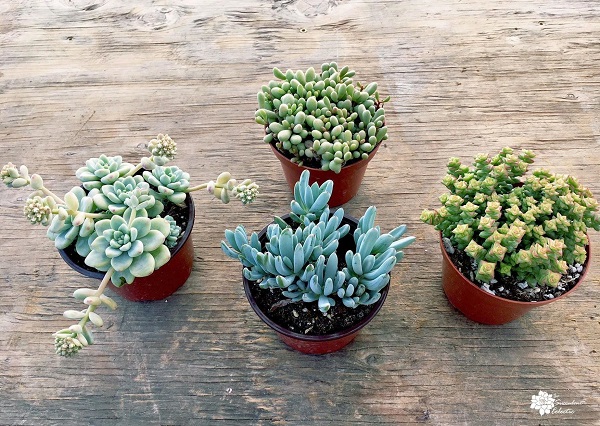
Dividing succulents, or really any type of plant, is the quickest and easiest method of plant propagation. You simply separate independently rooted portions of the plant and replant them with more root space and resources. But this is not a method that works for all succulent varieties at all times. Essentially, there are three conditions or types of succulents that can be divided:
- Plants with a growth pattern like grass, not like an oak tree
- Those plants that have formed pupsSucculent pups are the baby succulents that form at the base... or offsetsSucculent offsets are the baby succulents that form at the b...
- Plants with close planting proximity – two or more plants in the same container or root space
Let’s look at each of these conditions. The succulent varieties above all share a similar growth pattern. Do you see how each plant is actually made up of several, smaller plants? Each is made up of a cluster of independently rooted sections of top growth, similar to the way a plot of grass is made up of many individually rooted blades. Plants with this grass-like growth pattern are ideal for division, and can be divided all throughout their life. Unlike stem cuttings, or propagating from a single leaf, succulent division is about simply separating succulent plants into smaller, rooted portions.,
Dividing Succulents From Offsets
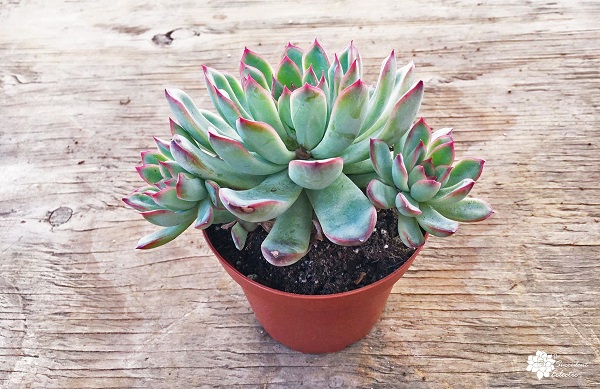
Other succulent varieties grow more like an oak tree, with all of their top growth and branches supported by a single, common set of roots. Succulents with this tree-like growth pattern can usually be propagated by cuttings or by leaf, but can only be divided under certain circumstances. When the plant matures, many varieties form baby plants, called “pups” or “offsets” at the base of the mother plant. Over time, these pups form their own root system, separate from the mother plant’s. These pups can then be divided from the mother plant, keeping each root structure intact.
The echeveria above is a great example of a succulent with a “tree-like” growth pattern. While a single echeveria rosette cannot be divided, pups can be divided from the mother.
Dividing Succulents Planted in Close Proximity
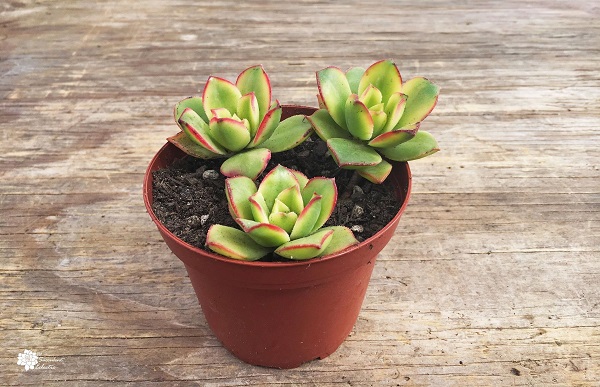
The third circumstance for dividing succulents is close planting proximity. You often find succulents planted two or even three plants to a single pot at the nursery. This is an accepted practice for selling plants. When there are not a sufficient number of larger plants available, the seller may pot up groups of smaller plants to fill the container size they advertise. These aeonium kiwi have a tree-like growth pattern. An individual aeonium cannot be divided. But because this pot has three small plants together, we can divide the plants safely. Their roots will have begun to intertwine, but each plant has a separate root structure, and they can easily be divided with no harm to any individual.
You may find the same thing in your garden. If you planted two small plants to take the visual space of a single large plant. They can easily be divided at a later date.
Dividing Senecio Blue Chalksticks
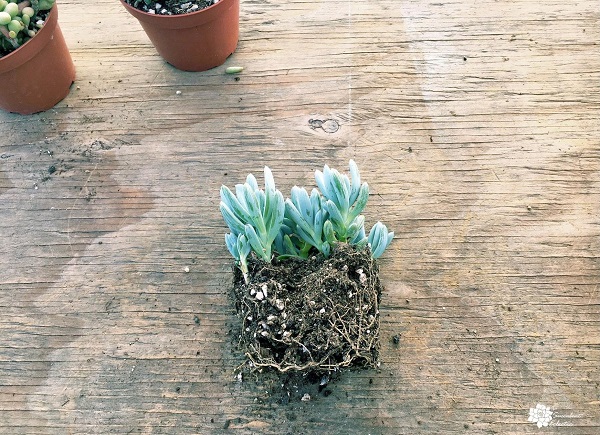
Let’s take a closer look at dividing succulents with a “grass-like” growth pattern. In its pot, this Senecio serpens ‘Blue Chalksticks’ might at first look like a single plant. But look more closely, without the pot. Do you see how it is truly a cluster of independently rooted plants? The little ones represent new growth. Yet even they have developed their own root structure. This is a succulent with a grass-like growth pattern, so it will be easy to divide. If you are not sure you see this yet, look here:
Gently Massage the Rootball to Divide Succulents
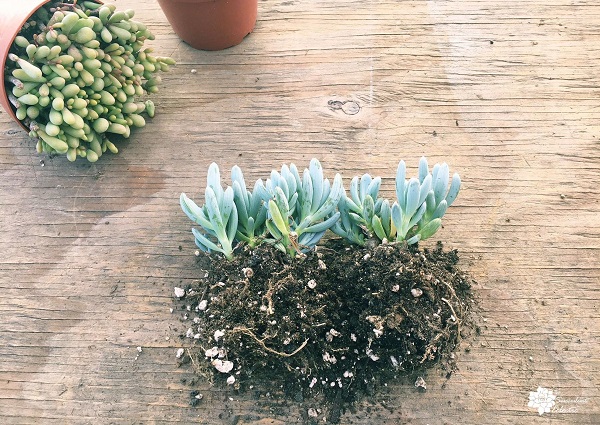
If you are not sure whether a newly purchased succulent can be easily divided, just gently massage the root ball. This will not harm the roots, no matter what type of succulent it is. If it can be divided, you will see the plant sections begin to separate on their own. From there, you may need to dig your fingers into the soil between the roots, and gently pry the plant sections apart.
Succulents That Can Be Divided
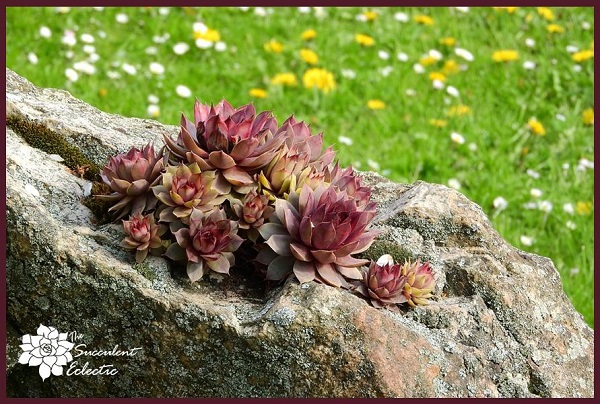
There are many succulents whose growth pattern is grass-like and perfect for dividing. These succulents form new growth on its own, independent root structure, making them ideal for dividing as they develop: Aichryson, Anacampseros, Cotyledon, Crassula, Euphorbia (some), Faucaria, Fenestraria, Jovibarba, Kalanchoe, Orostachys (some), Peperomia, Rhipsalis, Rosularia, Sedum, Sempervivum, and Senecio. Many more varieties form pups at the base of more mature plants, which can be divided from the mother plant.
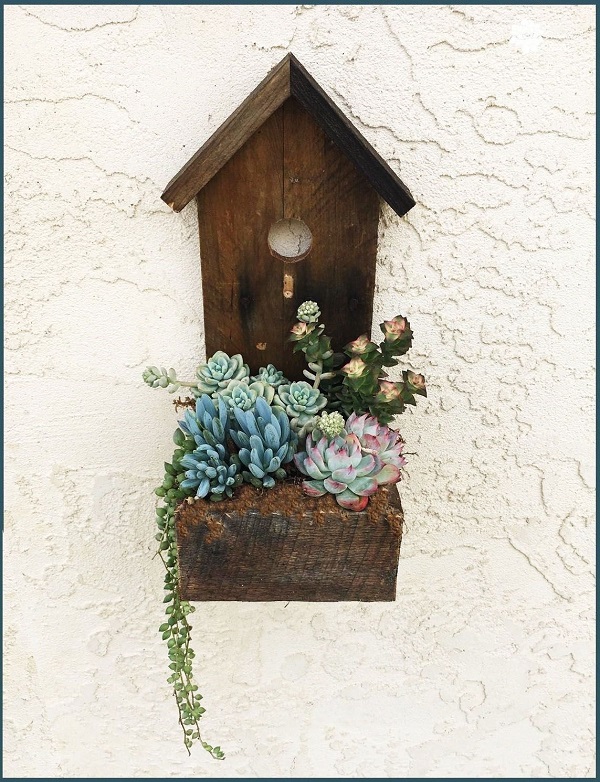
To plant up this birdhouse planter, I needed to divide each of the succulents I decided to use. Are you ready to start multiplying your succulents through division? I would love to know. Please take a moment to leave a comment. And feel free to ask any questions!
You can do this!

P.S. For my FREE course, 7 Steps to Succulent Success, please subscribe! Thanks so much!
P.P.S. Why not join my Facebook Group for succulent lovers? We talk about succulent care, propagation, succulent identification, and design. It’s a warm and welcoming group that would love to meet you!

